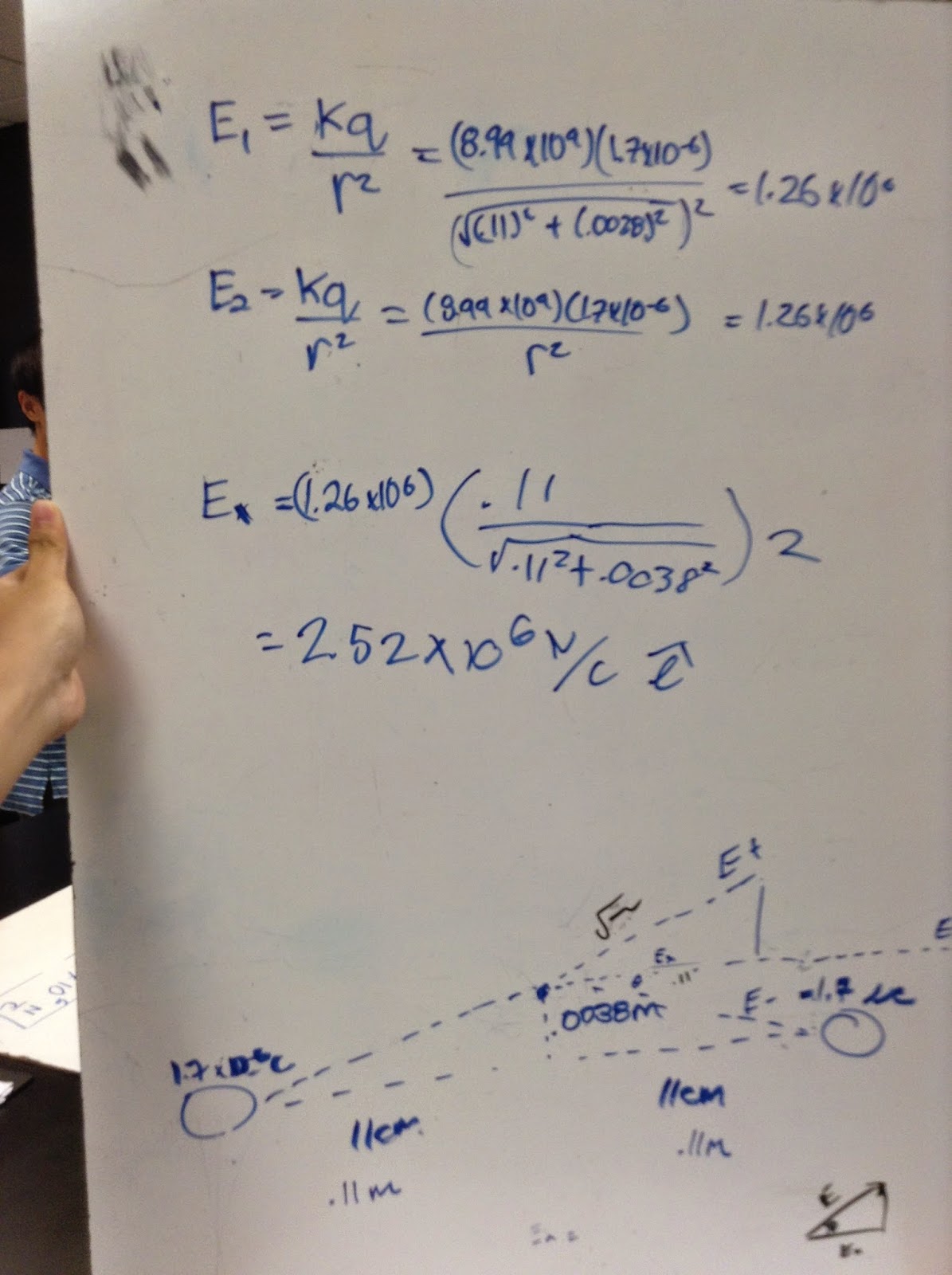This is an illustration of the flux lines.
This is one way to define flux.
We were asked which situation we would chose to do when a lighting strikes.
The professor demonstrated some stuff by putting different objects in a microwave. This is a picture of a cd in a microwave.
The sparks and flames were produced.
This is the result which burned holes on the cd.
A lit match was placed inside the microwave and it produced plasma ball, which are caused by the combustion of water vapor.
A light bulb was placed inside the microwave which produced different colored lights until the light bulb burned a hole and got caught on fire. A piece of soap was also placed in the microwave but due the dryness of the soap a reaction could not be seen, so a video on youtube was played to show how the soap would have reacted.
The top and bottom pictures are take from the lab manual answer the questions.
This is a solution showing how the solve the point charge is derived.




















































